Most if not all the pictures of kids posted on this blog rely on two techniques we use over and over to get them to smile at the camera. Olivier is too young to understand to smile at the camera, while Chiara would just play with faces most of the time – or put an unnatural smile at best …
Before explaining the two simple methods we use, below are examples of what clearly doesn’t work with a four year old girl (at least ours).
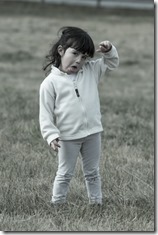
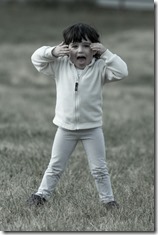
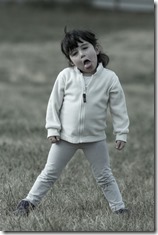
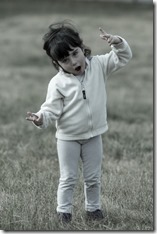
Canon EOS 5D Mk III – 70-200mm f2.8 – 1/640s at f/3.5 ISO 100 – (From left to right). Initially I asked Chiara to smile nicely at the camera. For the second one I tried to pretend not to take picture – but she can put a face faster than me moving the camera to my eye (and I’m quick !). On the third one, I tried to promise a piece of Chocolate for a nice smile. On the last one I was probably telling her it was all a waste of time …
So to address this difficulties we have two tricks – each have their advantages and drawbacks.
1. The Surprise Shot. To get the best natural face, and smile – we found that there is less than a second between the time a kid move his/her head – or change eyes direction – and the natural look to fade off once he/she saw the camera. If you are positioned well enough – it can also mean the kid will be looking straight at the camera. So this is perfect for eye-contact style shots.
Technically it’s not the easiest as there is literally less and a second to take the picture and one need to be positioned correctly – so requires some patience. It’s also best to have a camera that have a very fast shutter speed and good reflexes.
Obviously the biggest drawback is that it only works with portraits of a single child !
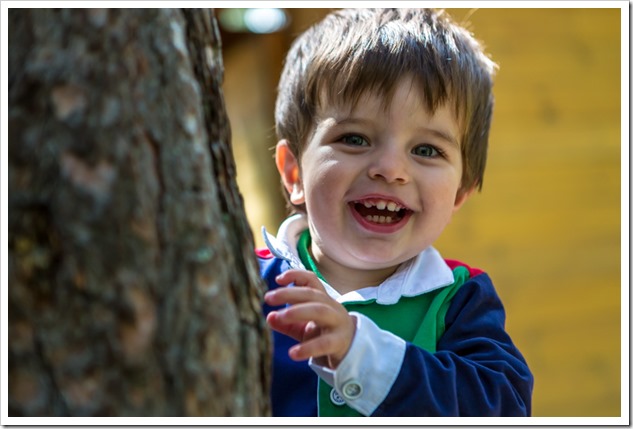
Canon EOS 5D Mk III – 24-70mm f2.8 – 1/800s at f/3.2 ISO 800 – On this picture one can believe he is smiling at the camera – not at all. In fact he kept smiling while turning around the tree, I just positioned myself to catch him when he would be making eye contact. The camera was set with a fast shutter speed. It’s also useful to have focus in manual to avoid risk of focus taking too much time …
2. The Distraction Shot. This one requires a third party, which would distract the kids – ideally making them smile. The biggest advantage is that it’s probably the only thing which work with “n” children. In this situation the kids usually keep their smile for a few seconds – so it’s easier not to miss the shot.
Apart from needing a clown, the smile is usually a bit forced and less natural – and children would generally not look at the camera. For multiple children, it’s also important to position them on a single line to all of them are in focus.
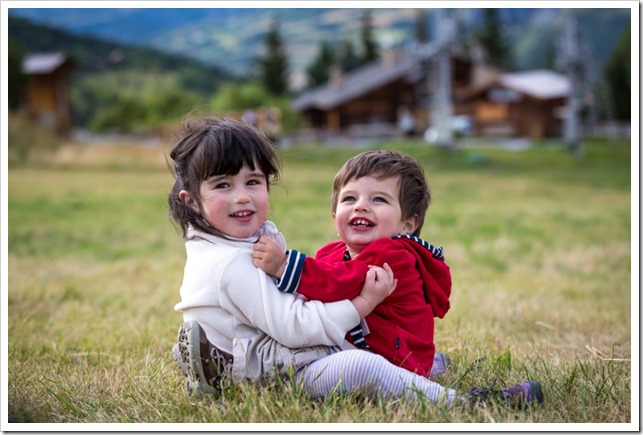
Canon EOS 5D Mk III – 70-200mm f2.8 – 1/500s at f/3.5 ISO 100 – On this portrait by Sab, we put them on the same plan close to each other. They are also not smiling to help us – I was making the clown and funny faces behind …
So getting pretty faces is not only due to luck and number of pictures taken ! (although both help as well)